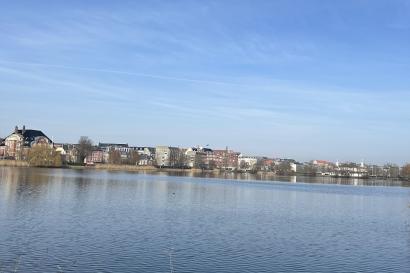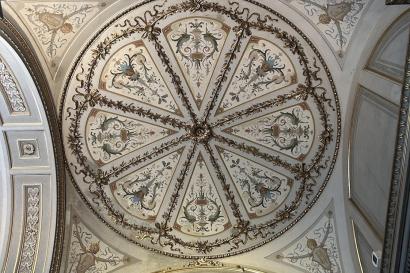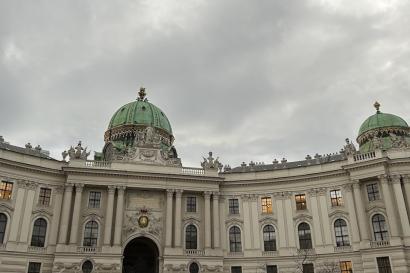One thing that was said at orientation had puzzled me: “I encourage you all to get lost,” some had said. This had seemed an odd thing to encourage since being lost is generally not a good thing––it means you aren’t where you want to/should be.
I arrived in Wien and was very pleased with how user-friendly the public transport was. Wien is traversable through a network of streetcars, subway lines, and busses. The system is very easy to navigate, through the use of charts that are posted on posts at each stop. The charts show which lines stop at the location, and the bold line shows the upcoming stops of the line you are waiting for––if the place you are trying to get to is not on the bolded part of the route plan, it simply means you need to find the stop on the opposite side of the street. This website is a great resource for people attempting to navigate to any address in Wien (Wienerlinien <www.wienerlinien.at | Home>).

The remains of a subterranean chapel are tucked into one of Vienna’s underground stations––history is everywhere if you just keep your eyes open
The first few weeks of class are devoted to intensive German classes––which means 3 hours of class plus however much time it takes to do homework. This meant that the remainder of the time was left to our own leisure. My Wanderlust had kicked in the minute I entered the city, so my days were spent exploring. I walked wherever I could, taking everything around me in with a child-like wonder and enthusiasm. I would take the streetcar around the whole loop so I could see everything the loop passed––noting places that I would have to later look into in depth; when exploring these areas I might simply hop onto an unknown bus and see where it would take me.
I figure, sure, you can stay on the beaten path in Wien, there certainly isn’t anything wrong with seeing the Kärntnerstraße, checking out Schönbrunn, and taking some pictures of the Ratshaus and Parliament, but I want to see the little things that tourists miss––the cramped side streets and tiny crooked alleys that are so unique to European cities. By going out into the branches of Wien, you discover the true gems of the city––the small cafés, the wonderful Brunnenmarkt in the 16th district (where there aren’t many tourists and the prices are actually good), the historic churches, small parks, &c., &c.
I’ve decided that getting truly lost in Wien isn’t possible. Planning things exactly and not allowing for any deviation destroys the very fun and discovery that makes travel such an incredible pleasure in the first place. Just as one doesn’t go through life eagerly pursuing death, one shouldn’t be overeager to always end up at a defined endpoint in Wien; I’ve found that some of my best discoveries were made when I saw an unknown bus coming towards me and I asked myself, where might this bus go? In Wien, one place is as filled with history and beauty as the next, so regardless of where you end up, it is bound to be a brilliant destination.

A small Turkish wood-fired oven bakery, that is open around the clock, sells cheap breads and pastries of all varieties
There’s only one way to find out where bus 48A goes…

Colin Baumgartner
<p><span style="color: rgb(29, 29, 29); font-family: Arial, Verdana, sans-serif; font-size: 12px; line-height: normal; background-color: rgb(237, 237, 237);">Colin Baumgartner is a Junior studying to be a secondary English education teacher. Colin grew up as a second generation Austrian and has always had a distinct sense of being split between two cultures––Austrian and American. Studying abroad in Vienna, Colin will have an opportunity to really explore the Austrian side of his heritage. When not buried in literature or writing, Colin enjoys blogging, hiking, cooking, working out, and traveling. Colin is an unabashed aesthete and gourmand, so the beautiful foods, sights, and people of Europe will not go unnoticed or unrelished. Dum vivimus, vivamus!</span></p>









